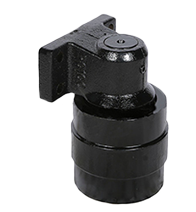Tips for Safe, Productive Digging with Excavators
Proper operation of an excavator while trenching, sloping or benching can have a big impact on productivity. Planning ahead will optimize performance, minimize the risk of accidents and maximize productivity.
One of the most common mistakes is failing to plan your approach to the excavation. Bottlenecks in the process can result in moving material more times than necessary. Take time to visualize how the job will progress to avoid "boxing" the machine in between obstacles or the spoils pile, or limiting your reach.
As part of the planning process, it’s important to identify:
where you will put the spoil pile
where pipe, bedding or other materials will be staged
where any existing utilities are located
and, in the case of trenching, whether additional shoring may be needed.
A stable platform for the excavator is an essential element of site setup. Make sure the machine will sit on even ground and that the ground is stable. If needed, pack dirt under one of the tracks to ensure a level surface.
When digging a trench, take time to create some form of guide, whether that be offset stakes, a chalk line or stringline. Then align the front and back of the machine to the line you’re referencing to ensure you’re tracking straight.
Training Tips for Safe, Efficient Trenching
Position the machine at a productive height for loading material. The bench height should be about the height of the haul vehicle’s sideboards. Most experts recommend setting up for the trucks to come down the left side of the excavator, which is best for loading angle and visibility.
The biggest potential hazard of working over the edge of a hole is the risk of cave-ins, which can endanger not only those in the trench but the operator and machine, as well. As such, it's critical to maintain a safe distance from the edge based on soil type.
Make sure you know the type of soil on which the excavator is resting, and ensure the machine is positioned far enough back to support its weight.
Maintain awareness of people and objects around the machine at all times. Be aware of blindspots around the machine, including the working radius of the rear counterweight. Built-in camera systems on today’s excavators can help to mitigate risks, but it is still the operator’s responsibility to be aware of objects, equipment and especially personnel within the work area.
Pay close attention to the direction of travel. An excavator allows the upper housing to be rotated 360 degrees. However, the undercarriage tracks in the same direction, regardless of which way the operator is facing. Make sure that you are in the forward-facing direction to avoid inadvertent movement in the wrong direction that could potentially put the operator and machine – as well as those working around it – in a precarious position.

Sign up to our newsletter for the construction machinery